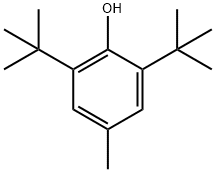Potassiumsorbate , 10mMinWater , 24634-61-5
CAS NO.:24634-61-5
Empirical Formula: C6H7KO2
Molecular Weight: 150.22
MDL number: MFCD00016546
EINECS: 246-376-1
| Pack Size | Price | Stock | Quantity |
| 1ml | RMB559.20 | In Stock |
|
| others | Enquire |
PRODUCT Properties
| Melting point: | 270 °C |
| Density | 1,361 g/cm3 |
| vapor pressure | <1 Pa (20 °C) |
| FEMA | 2921 | POTASSIUM SORBATE |
| storage temp. | 2-8°C |
| solubility | H2O: 1 M at 20 °C, clear, colorless to faintly yellow |
| pka | 4.69[at 20 ℃] |
| form | Powder |
| color | White to light cream |
| PH | 7.8 (H2O, 20.1℃) |
| Odor | Odorless |
| PH Range | 8 - 11 at 580 g/l at 20 °C |
| Water Solubility | 58.2 g/100 mL (20 ºC) |
| Merck | 14,7671 |
| BRN | 5357554 |
| Stability: | Stable. Incompatible with strong oxidizing agents. |
| InChIKey | CHHHXKFHOYLYRE-STWYSWDKSA-M |
| LogP | -1.72 at 20℃ |
| CAS DataBase Reference | 24634-61-5(CAS DataBase Reference) |
| EPA Substance Registry System | Potassium sorbate (24634-61-5) |
Description and Uses
Potassium sorbate is a white crystalline powder. It is a potassium salt of sorbic acid.It was originally discovered in the 1850’s, and was derived from the Mountain Ash Tree. Today, potassium sorbate is synthetically created.Potassium sorbate is a good food preservatives, fully degradable, similar to fatty acids found naturally in foods. It is used to slow the growth of molds and yeasts in foods. It is commonly found in margarine, wines, cheeses, yogurts, soft drinks, and baked goods. Potassium sorbate has been used has a food preservative for many years. There have been extensive long-term tests that have confirmed its safety and it is on the Center for Science in the Public Interest list of safe additives.
Sorbic acid and its potassium salt is commonly employed as food preservative in wide range of foodstuffs, such as cheese, pickles, sauces and wines.
Potassium sorbate is a food grade preservative generally regarded as safe (GRAS) worldwide. It is the inactive salt of sorbic acid. It readily dissolves in water where it converts to sorbic acid, its active form, at a low pH. Sorbic acid is very pH dependent. While it shows some activity up to pH 6 (about 6%), it is most active at pH 4.4 (70%). At pH 5.0 it is 37% active. As sorbic acid, it is considered to be active against mold, fair against yeast and poor against most bacteria. Sorbic acid is an unsaturated fatty acid and as such is subject to oxidation (use of an antioxidant like Mixed Tocopherols T50 is recommended). It is also sensitive to UV light and may turn yellow in solution. Gluconolactone is reported to stabilize potassium sorbate against discoloration and darkening in aqueous solutions and may be useful in stabilizing sorbic acid in the water phase of a product.
Safety
| Symbol(GHS) |  GHS07 |
| Signal word | Warning |
| Hazard statements | H319 |
| Precautionary statements | P305+P351+P338 |
| Hazard Codes | Xi,C,T,F |
| Risk Statements | 36/37/38-35-22 |
| Safety Statements | 26-36-45-36/37/39 |
| WGK Germany | 1 |
| RTECS | WG2170000 |
| Autoignition Temperature | >150 °C |
| TSCA | Yes |
| HS Code | 2916 19 95 |
| Toxicity | LD50 orally in Rabbit: 3800 mg/kg |


